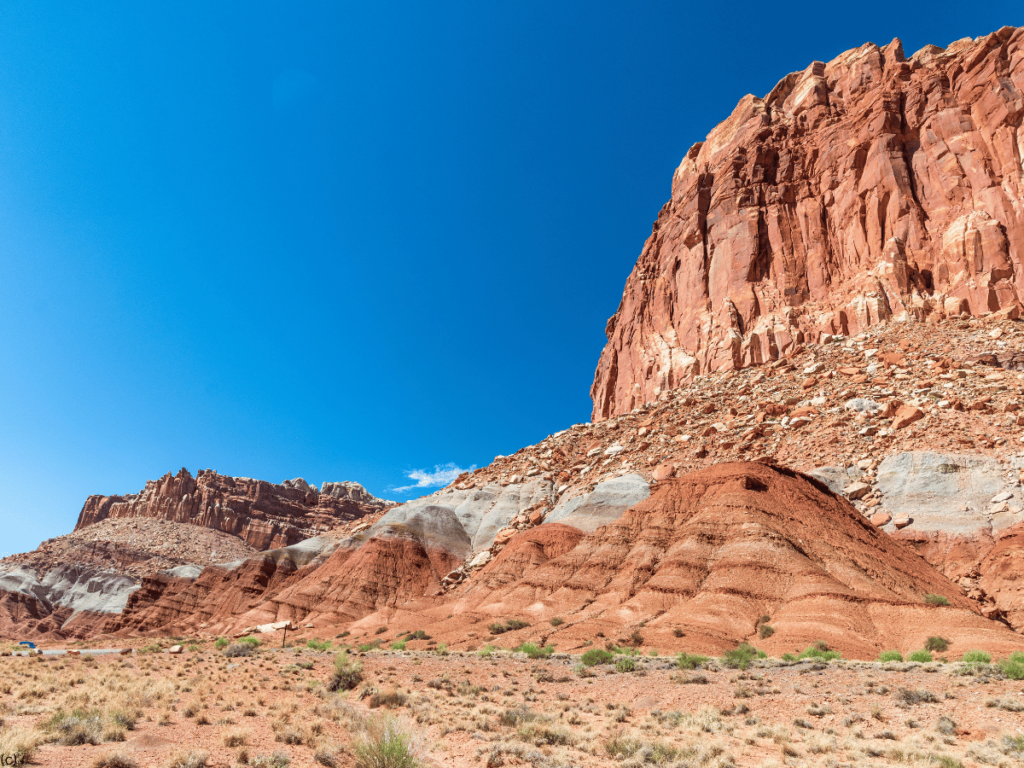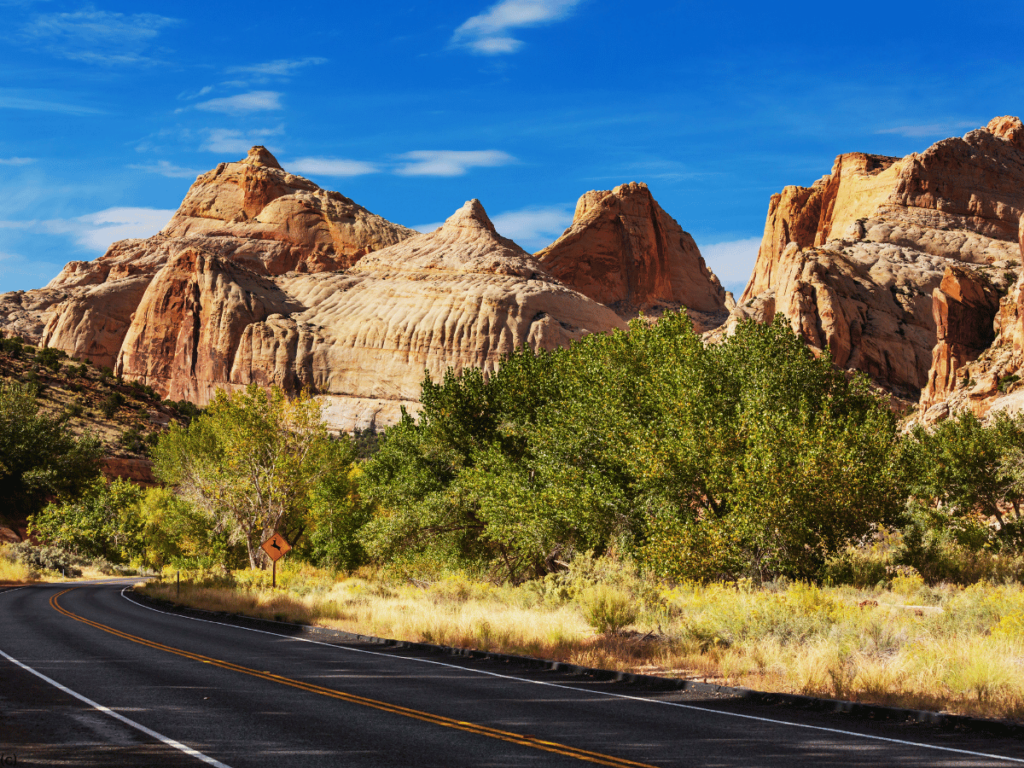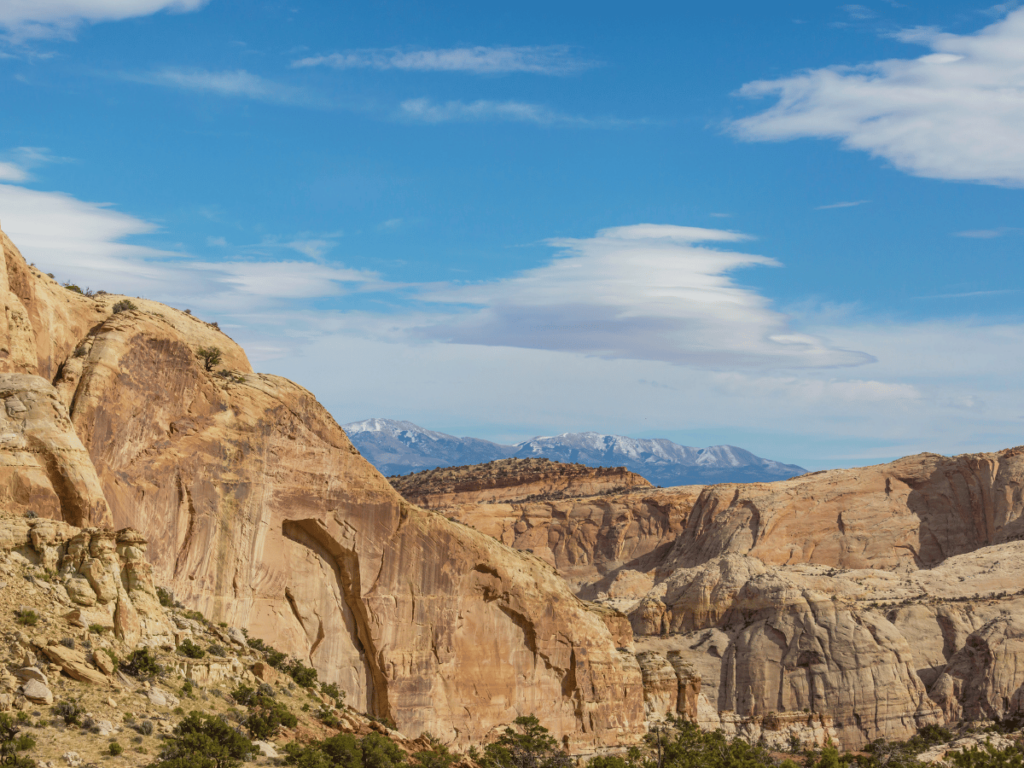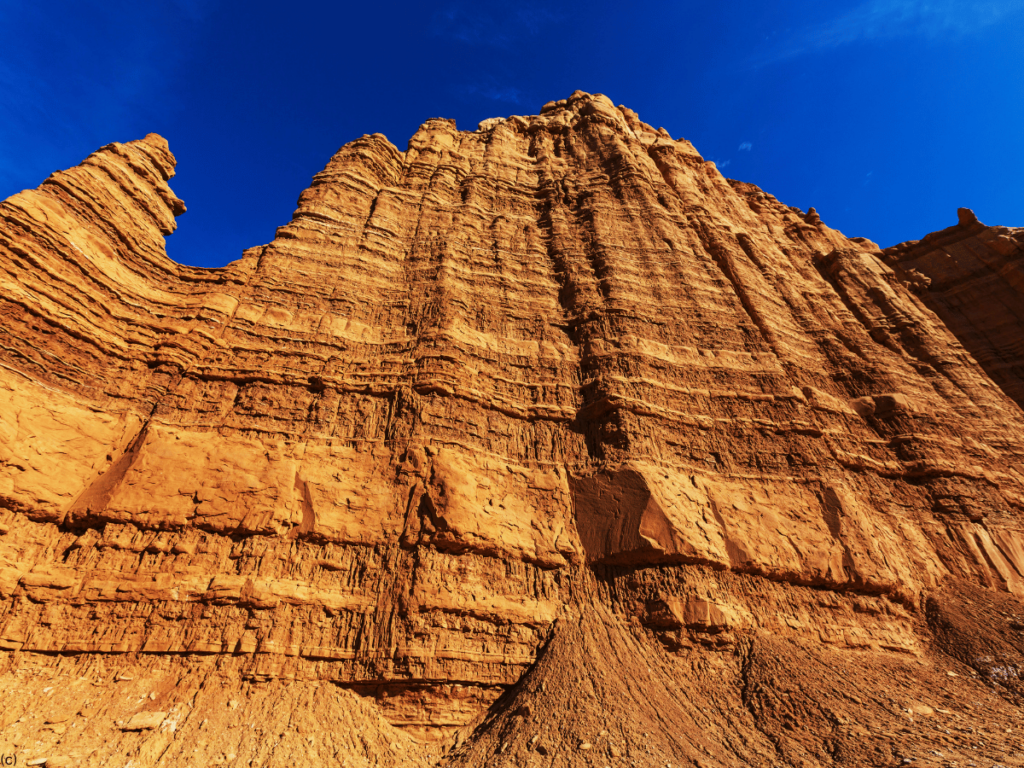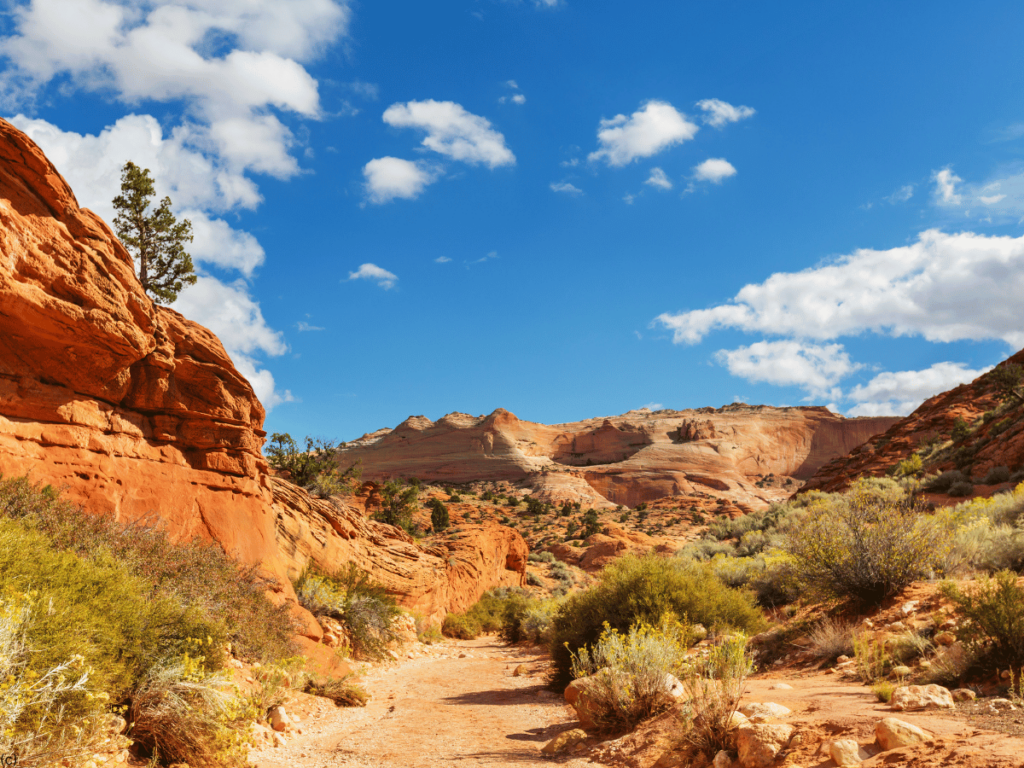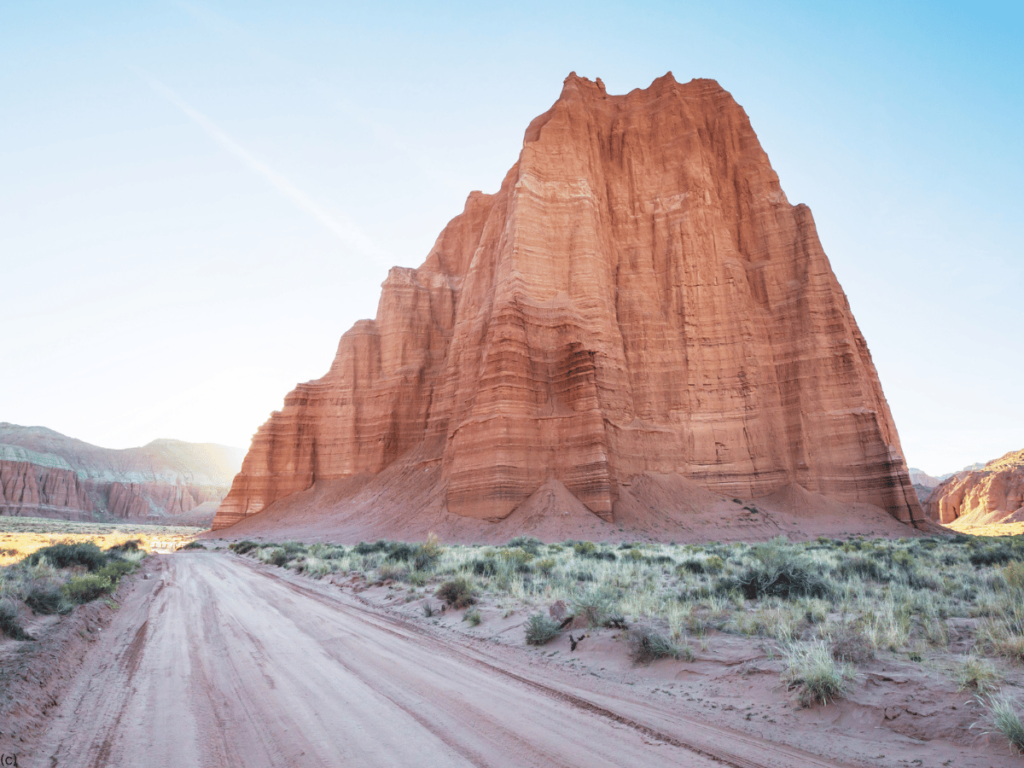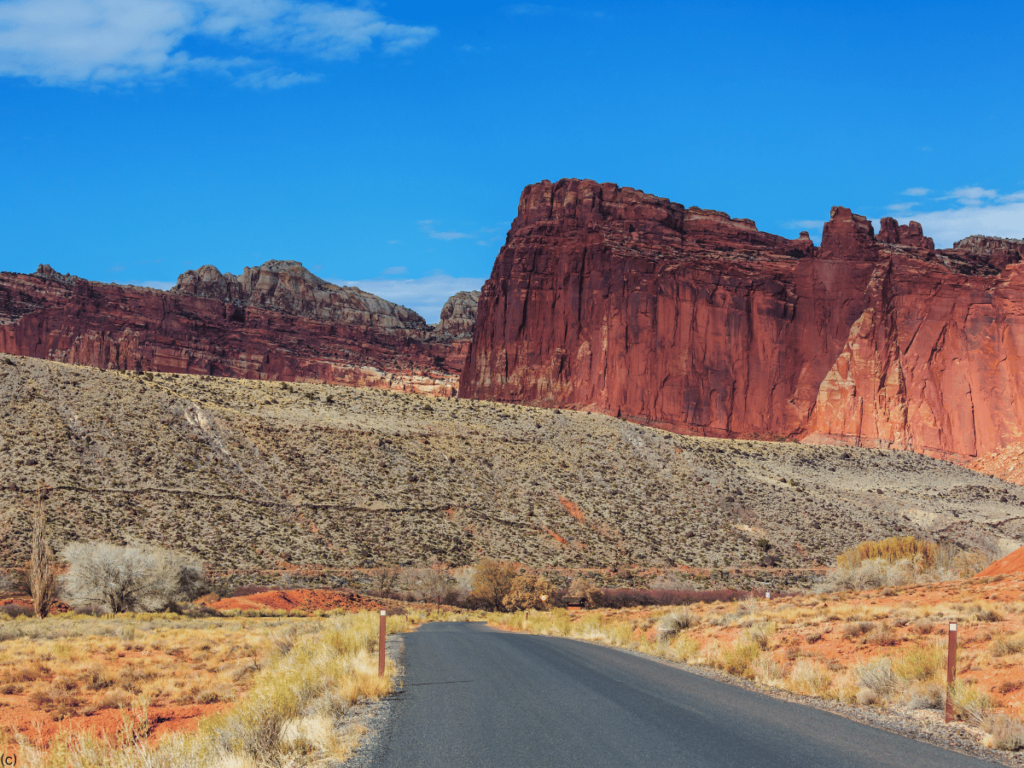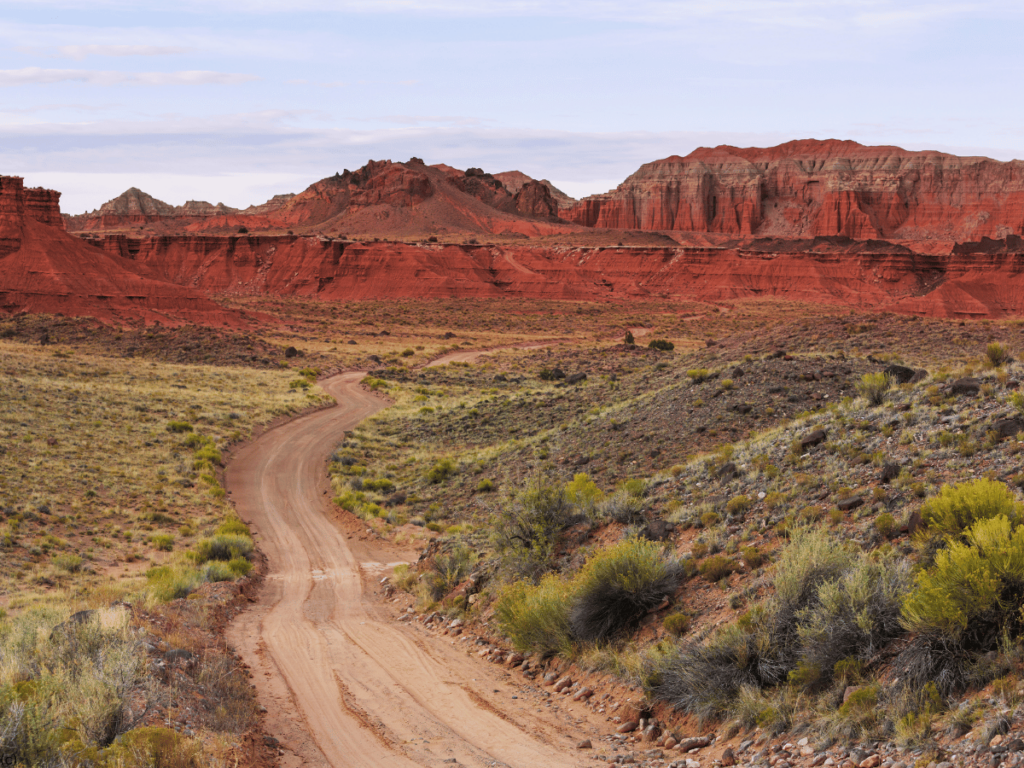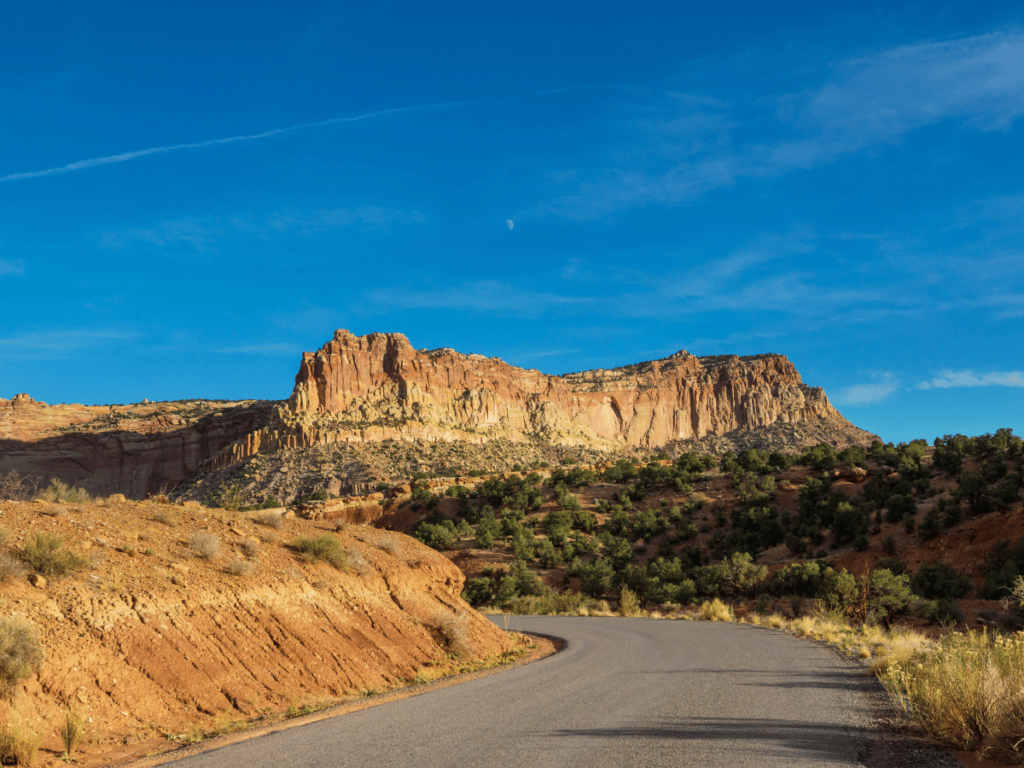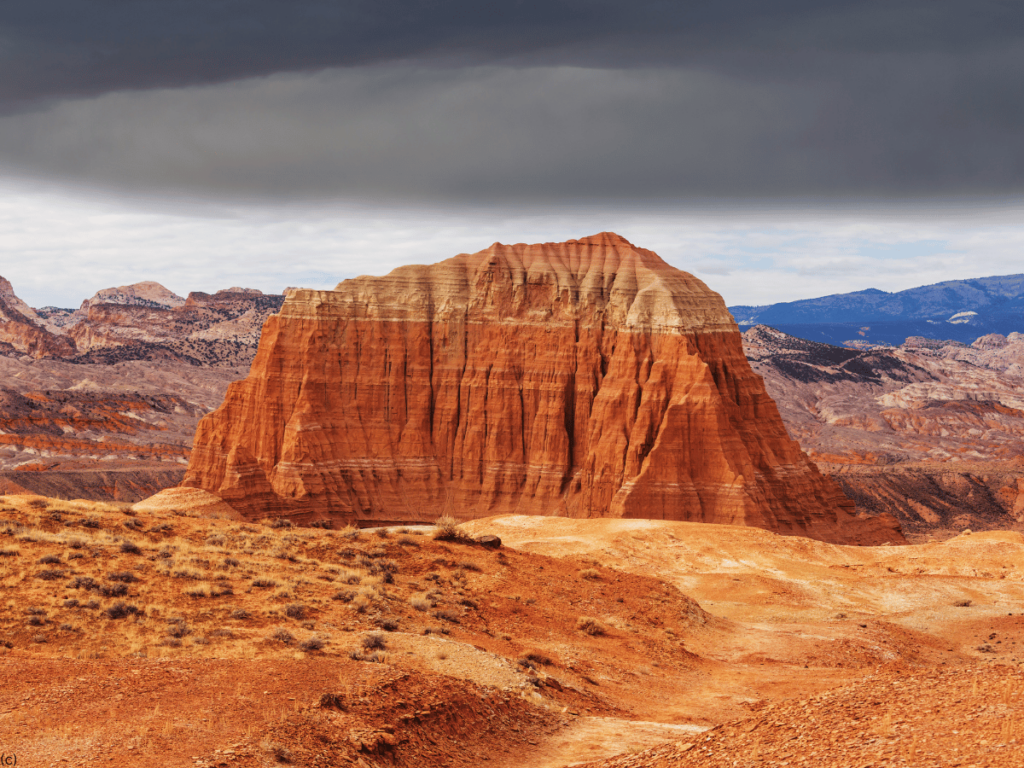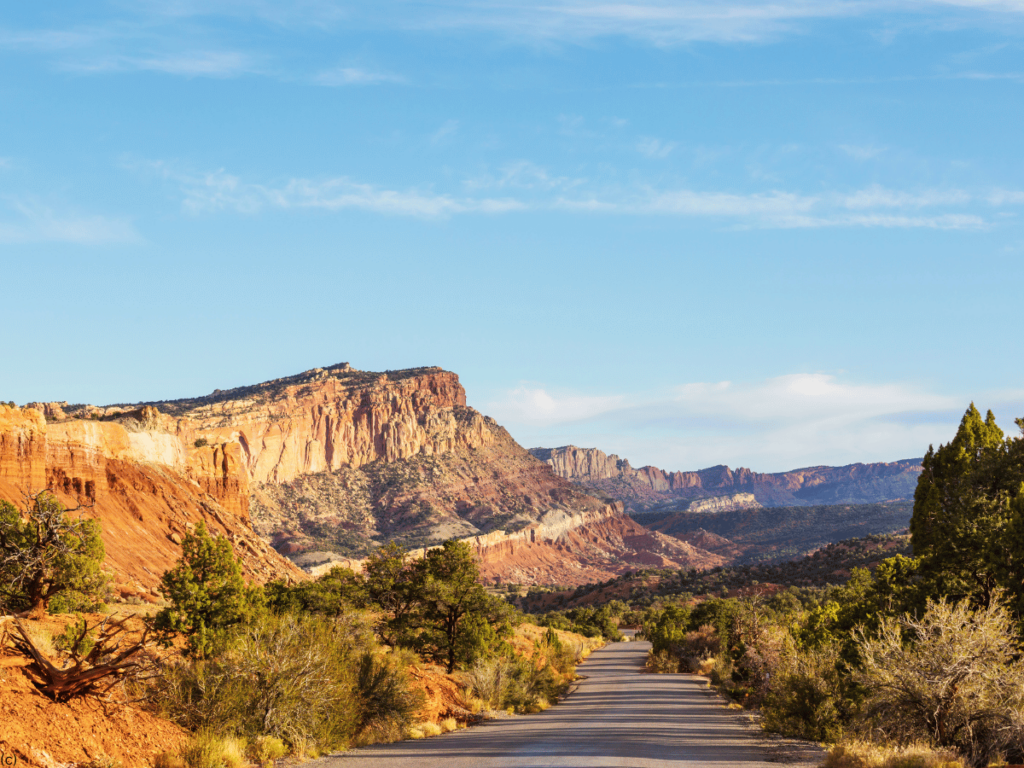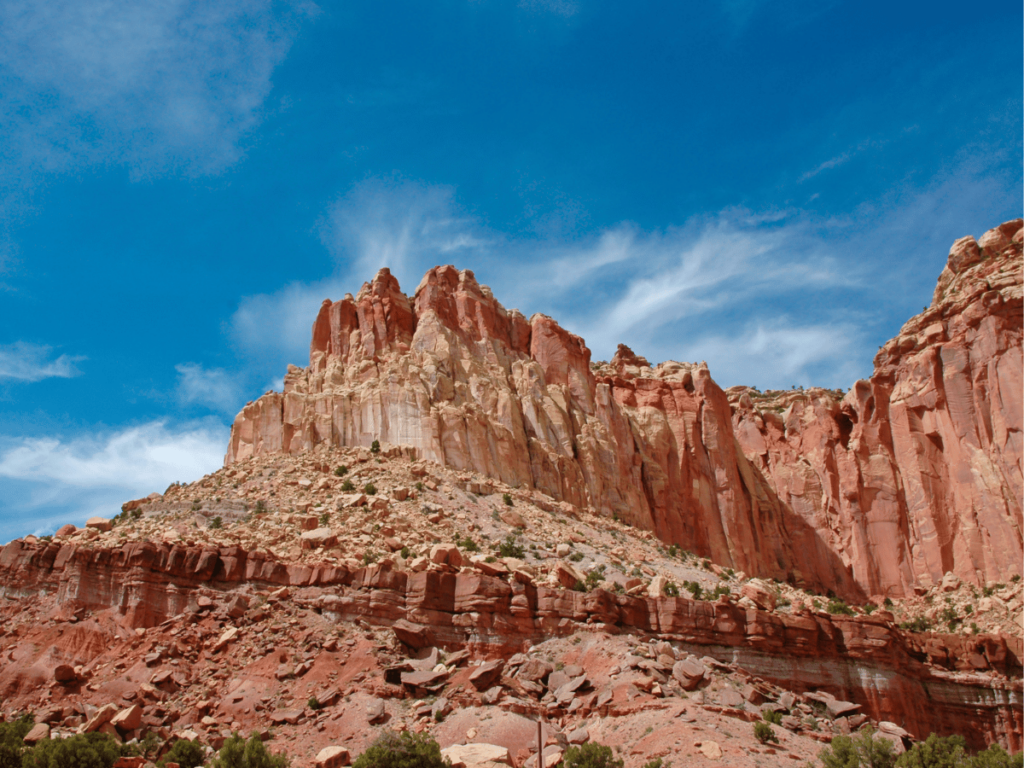 Nestled in the heart of Utah’s red rock country, Capitol Reef National Park is a hidden treasure waiting to be explored. Though often overshadowed by its more famous neighbors like Zion and Bryce Canyon, Capitol Reef offers an equally stunning array of landscapes, history, and outdoor activities. With its rugged cliffs, lush valleys, ancient petroglyphs, and starry skies, this park has something for everyone. To help you make the most of your visit, we’ve compiled an in-depth guide with tips and advice for exploring Capitol Reef National Park.
Nestled in the heart of Utah’s red rock country, Capitol Reef National Park is a hidden treasure waiting to be explored. Though often overshadowed by its more famous neighbors like Zion and Bryce Canyon, Capitol Reef offers an equally stunning array of landscapes, history, and outdoor activities. With its rugged cliffs, lush valleys, ancient petroglyphs, and starry skies, this park has something for everyone. To help you make the most of your visit, we’ve compiled an in-depth guide with tips and advice for exploring Capitol Reef National Park.
1. Best Times to Visit Capitol Reef
Timing your visit to Capitol Reef can significantly enhance your experience. The park is open year-round, but the best times to visit are in the spring (April to June) and fall (September to October).
- Spring: In spring, the weather is mild, with daytime temperatures ranging from 60°F to 80°F. This is an ideal time for hiking, as the wildflowers are in bloom, and the orchards in Fruita are blossoming.
- Fall: Fall offers similar weather conditions, with cooler temperatures and fewer crowds. The fall foliage in the park’s higher elevations adds a touch of color to the already stunning landscape.
- Summer: Summer can be hot, with temperatures often exceeding 90°F, making strenuous activities more challenging. However, mornings and evenings are cooler, making them perfect for exploring. If you visit in the summer, be prepared for the heat and stay hydrated.
- Winter: Winter is the least crowded season, offering a peaceful experience. While snow is rare in the lower elevations, it can occur, especially in the higher parts of the park, creating a beautiful contrast against the red rock.
2. Planning Your Itinerary
Capitol Reef may be less crowded than other national parks, but its size and diversity mean that planning is essential to make the most of your visit. Depending on how much time you have, here’s how you can structure your itinerary:
- One Day: If you only have one day, focus on the highlights. Start with the Scenic Drive, explore the Fruita Historic District, hike the Hickman Bridge Trail, and visit the petroglyphs along Highway 24.
- Two to Three Days: With two or three days, you can explore more trails, such as Cassidy Arch or Cohab Canyon, and take the time to drive the Cathedral Valley Loop or Burr Trail Road. Consider spending an evening stargazing.
- Four Days or More: If you have four or more days, you can delve deeper into the park’s backcountry, explore less-visited areas like the Waterpocket Fold, or spend a night or two camping under the stars.
3. Getting to Capitol Reef
Capitol Reef is located in a remote area of Utah, and getting there requires some planning. The nearest major airports are in Salt Lake City (about 220 miles away) and Las Vegas (about 300 miles away). From there, you can rent a car and drive to the park.
- Driving Directions: Capitol Reef is accessible via Highway 24, which runs through the park from east to west. This highway connects with several major routes, making it easy to include Capitol Reef in a larger road trip through Utah’s national parks.
- Nearby Towns: The closest towns to Capitol Reef are Torrey (about 11 miles west of the park) and Hanksville (about 30 miles east). Torrey is the more popular base for visitors, offering a range of accommodations, restaurants, and shops.
4. Where to Stay
While Capitol Reef doesn’t have the lodging options found in some other parks, there are still several ways to stay close to the action.
a. Fruita Campground
Located within the park, Fruita Campground is the only developed campground in Capitol Reef. It offers 71 sites that can accommodate tents and RVs. The campground is set in a picturesque location surrounded by orchards and towering cliffs, and it has amenities like flush toilets, picnic tables, and fire pits. Reservations are highly recommended, especially during peak seasons.
b. Backcountry Camping
For those seeking solitude, backcountry camping is allowed in most areas of the park, though a free backcountry permit is required. This option is ideal for experienced campers who want to explore the park’s more remote areas.
c. Lodging in Torrey
If you prefer more comfortable accommodations, the town of Torrey offers several hotels, motels, and vacation rentals. Staying in Torrey also gives you easy access to restaurants and other services, making it a convenient base for exploring Capitol Reef.
5. Essential Gear and Packing Tips
When visiting Capitol Reef, it’s important to pack appropriately for the conditions you’ll encounter. Here’s a list of essential items to bring:
- Clothing: Layers are key, as temperatures can vary significantly between day and night. In summer, lightweight, breathable clothing is essential, while in spring and fall, bring a warm jacket for cooler mornings and evenings. A hat, sunglasses, and sunscreen are must-haves for sun protection.
- Footwear: Sturdy hiking boots or shoes with good traction are important, especially if you plan to tackle some of the more challenging trails. Bring sandals or water shoes if you plan to wade through any water-filled areas, like the Narrows.
- Water and Snacks: The desert environment can be dehydrating, so carry plenty of water—at least one gallon per person per day. High-energy snacks like nuts, dried fruit, and energy bars are great for keeping your energy up during hikes.
- Navigation: A map of the park and a compass or GPS device are essential for backcountry adventures. While many trails are well-marked, it’s easy to get disoriented in the vast landscape.
- Safety Gear: A first-aid kit, flashlight or headlamp, and multi-tool are always good to have on hand. If you’re heading into remote areas, consider bringing a satellite phone or personal locator beacon.
6. Navigating the Park: Tips for Getting Around
Capitol Reef’s vastness means that getting around efficiently is crucial to maximizing your time. Here are some tips for navigating the park:
- Scenic Drive: The Scenic Drive is a must-do, but be aware that it’s a fee area ($20 per vehicle), and part of the road is unpaved. High-clearance vehicles are recommended for some of the side roads, like Grand Wash and Capitol Gorge.
- Burr Trail Road: This scenic backcountry road offers access to some of the park’s most remote areas. The road is mostly unpaved and can be rough in spots, so a high-clearance vehicle is advisable.
- Cathedral Valley Loop: This 58-mile loop through Cathedral Valley is a true backcountry adventure. The loop is entirely unpaved, and crossing the Fremont River is required, so check conditions beforehand. High-clearance, 4WD vehicles are strongly recommended.
- Parking: Popular trailheads, like those for Hickman Bridge and Cassidy Arch, can fill up quickly, especially during peak season. Arrive early in the morning to secure a spot.
7. Hiking Tips and Trail Recommendations
Hiking is one of the best ways to experience Capitol Reef’s diverse landscapes. Whether you’re a beginner or an experienced hiker, the park has a trail for you.
a. Easy Hikes
- Hickman Bridge Trail: This 2-mile round-trip hike is one of the park’s most popular. It’s a relatively easy trail that leads to a stunning natural bridge, with views of the Fremont River and Capitol Dome along the way.
- Capitol Gorge Trail: An easy 2-mile round-trip hike, Capitol Gorge offers a walk through a narrow, scenic canyon with petroglyphs and the historic Pioneer Register carved into the canyon walls.
b. Moderate Hikes
- Cohab Canyon Trail: This 3.4-mile round-trip trail offers a moderate hike with great views of the Fruita Valley and colorful rock formations. The trail ascends into a narrow canyon and has several side canyons to explore.
- Cassidy Arch Trail: Named after the famous outlaw Butch Cassidy, this 3.4-mile round-trip trail is moderately challenging, with a steep ascent that rewards you with a stunning view of the arch and the surrounding landscape.
c. Strenuous Hikes
- Rim Overlook/Navajo Knobs Trail: This challenging trail offers some of the best views in the park. The Rim Overlook portion is 4.6 miles round-trip, while the full Navajo Knobs hike is 9.4 miles round-trip with a significant elevation gain.
- The Narrows of Capitol Reef: For experienced hikers looking for an adventure, the Narrows offers a strenuous backcountry experience. Be prepared for wading through water and scrambling over rocks. Check weather conditions before attempting this hike, as flash floods can be dangerous.
8. Exploring Capitol Reef’s History and Culture
Capitol Reef isn’t just about stunning natural landscapes; it’s also rich in history and culture. From ancient petroglyphs to historic orchards, there’s plenty to explore.
a. Petroglyphs
Capitol Reef is home to some of the best-preserved petroglyphs in the United States. These ancient carvings, created by the Fremont people over 1,000 years ago, can be found along Highway 24. The Petroglyph Panel is easily accessible and features intricate designs depicting animals, people, and abstract symbols.
b. Fruita Historic District
The Fruita Historic District is a must-visit for history enthusiasts. This small settlement, established by Mormon pioneers in the late 19th century, is known for its orchards, which are still maintained today. Visitors can explore the Gifford House, a historic home turned museum and store, where you can buy fresh pies, jams, and other local treats.
c. The Pioneer Register
Located in Capitol Gorge, the Pioneer Register is a fascinating piece of history. Here, you’ll find the names of early settlers and travelers who passed through the area, carved into the canyon walls. It’s a unique way to connect with the past and imagine what life was like for those who explored this rugged landscape.
9. Wildlife Watching
Capitol Reef’s diverse habitats support a variety of wildlife. While you’re unlikely to encounter large numbers of animals, there are some species you might spot during your visit.
- Mule Deer: These graceful animals are commonly seen in the Fruita area, especially in the early morning and late afternoon.
- Bighorn Sheep: Capitol Reef is home to a small population of desert bighorn sheep. They are often spotted in the cliffs and canyons of the Waterpocket Fold and along the Scenic Drive.
- Birdwatching: The park is a haven for birdwatchers, with over 230 species recorded. Look for peregrine falcons, golden eagles, and a variety of songbirds. The Fruita orchards are particularly good for birdwatching, especially during migration seasons.
10. Star Gazing: Capitol Reef’s Dark Skies
One of Capitol Reef’s most remarkable features is its dark skies, free from light pollution. The park is recognized as a Gold-Tier International Dark Sky Park, making it one of the best places in the country for stargazing.
- Best Spots for Stargazing: The Gifford Homestead and the Slickrock Divide are popular spots for stargazing. Bring a blanket, lie back, and enjoy the spectacle of the Milky Way, shooting stars, and the occasional planet.
- Night Sky Programs: During the summer months, Capitol Reef offers ranger-led night sky programs that include telescope viewings and informative talks about the stars and planets. These programs are a fantastic way to deepen your appreciation of the night sky.
11. Safety Tips
Capitol Reef is a wild and remote area, so safety should always be a priority. Here are some tips to keep in mind:
- Hydration: The dry desert climate can lead to dehydration quickly, so drink plenty of water throughout the day.
- Sun Protection: The sun in Utah can be intense, even in the cooler months. Wear sunscreen, a wide-brimmed hat, and sunglasses to protect yourself from UV rays.
- Flash Floods: Be aware of the weather, especially during the summer monsoon season. Flash floods can occur in canyons, so avoid hiking in narrow slots if there’s a chance of rain.
- Wildlife: While wildlife encounters are rare, it’s important to keep a safe distance from animals like mule deer and bighorn sheep. Never feed wildlife, as it can be harmful to both you and the animals.
- Trail Safety: Stick to established trails, and let someone know your plans if you’re heading into the backcountry. Cell phone service is limited in the park, so be prepared.
12. Leave No Trace
Capitol Reef is a pristine environment, and it’s important to keep it that way. Follow Leave No Trace principles to minimize your impact on the park:
- Pack Out Trash: Whatever you bring into the park, make sure to pack it out. This includes food wrappers, water bottles, and even biodegradable items like fruit peels.
- Stay on Trails: Avoid creating new trails or walking off established paths, as this can damage the fragile desert ecosystem.
- Respect Wildlife: Observe animals from a distance and avoid feeding them.
- Camp Responsibly: If you’re backcountry camping, choose a site that’s already been used to minimize your impact.
Capitol Reef National Park is a stunning destination that offers a unique blend of natural beauty, outdoor adventure, and rich history. By following these tips and advice, you can ensure that your visit is not only enjoyable but also safe and responsible. Whether you’re hiking through its rugged canyons, exploring its ancient petroglyphs, or simply soaking in the beauty of the night sky, Capitol Reef promises an unforgettable experience. So pack your bags, plan your trip, and get ready to explore one of Utah’s most underrated national parks.
